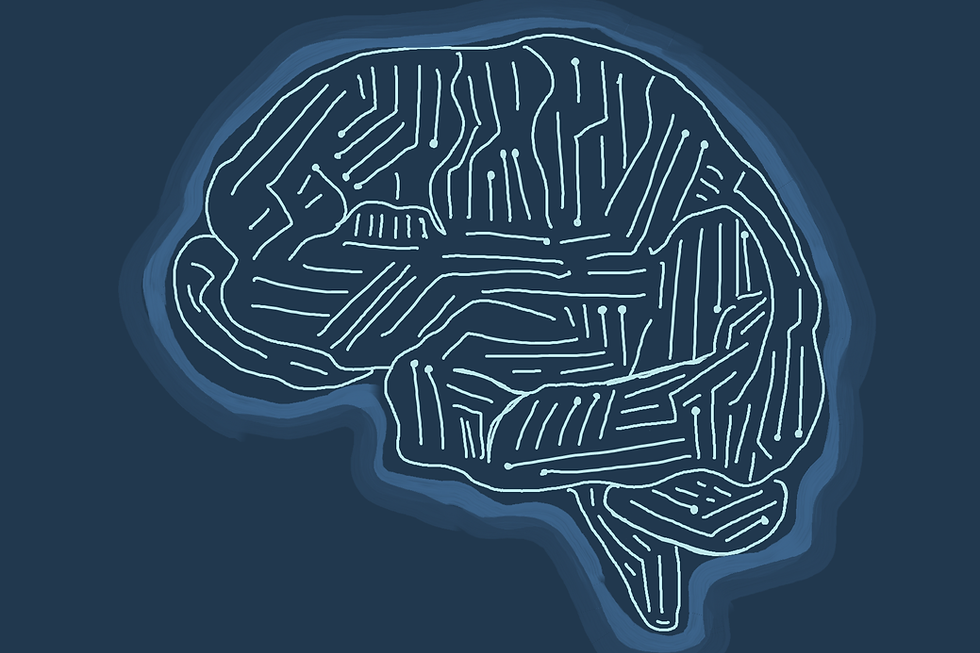UVM Research on the Effect Cannabis has on the Growing Brain
- The Natural Philosopher
- May 6, 2019
- 3 min read
By Nick Fontaine
During my time here at UVM, I have been lucky enough to work in the lab of Dr. Hugh Garavan for three years. The majority of my work in lab has been checking the quality of brain scans from a very, very large international study called the IMAGEN project. According to the IMAGEN website, “IMAGEN combines brain imaging, genetics, and psychiatry to increase our understanding of adolescent brain development and behaviour – namely, sensitivity to rewards, impulsivity, and emotional processing." The study obtained this information from a total 2,400 teenagers at eight study sites from five European countries. The participants were scanned at ages 14 and 19 and also filled out very detailed surveys at ages 14, 16, and 19 to track information you couldn’t get through a brain scan (such as history of drug use, personality types, socioeconomic status, and much, much more) All of these data were shared with the team I worked with here in Burlington. It was really cool to be a part of such a large and interesting study like this— and even cooler when I get to see some of the results coming out of this.
One of the more intriguing and shocking results to come out of my lab is the finding that just one or two incidences of exposure to cannabis as an adolescent can lead to structural changes in the brain. This study, co-authored by many of my co-workers, looked at the grey matter volume (grey matter refers to the part of the brain that is dense in neuron cell bodies) of kids who reported just one or two uses of any form of cannabis at age 14, and then compared how their grey matter changed at age 19 compared to a group that were the same on all other measures except for cannabis use.
It was found that those with a little cannabis use at age 14 had significantly greater grey matter volume at age 19 in many brain regions (amygdala, hippocampus, and striatum, left prefrontal cortex, lingual gyri, posterior cingulate, and cerebellum). You may think that’s a good thing. More grey matter must mean you have more cells to do the work required of a brain right? This is not the case, as neural pruning (getting rid of unused/underused connections in the brain) is a major part of development and learning. We generally make more connections than we need and then prune it back as we age. The researchers also ensured that this was not a pre-existing predictor of cannabis use by checking the changes in grey matter volume of non-users at 14 who went on to use at 19, and found no significant change (Orr, et al., 2019).
This research is very interesting considering how more and more adolescents are likely to use marijuana as it becomes legal in more and more places and the cultural taboo lessens. It would be interesting to see how much further research changes the generally positive attitude we have towards cannabis right now.
As my graduation nears, it's still amazing for me to think back to how one email I sent as a sophomore ended up with me playing a role (admittedly a very small one) in such interesting and important research. Knowing I saw the brain scans that were used to find these results shows what going to a school like UVM has to offer.
P.S. Hey Admissions board, I’m open to payment for that last paragraph
References:
Orr, C., Spechler, P., Cao, Z., Albaugh, M., Chaarani, B., Mackey, S., … Garavan, H. (2019). Grey Matter Volume Differences Associated with Extremely Low Levels of Cannabis Use in Adolescence. Journal of Neuroscience, 39(10), 1817–1827.
Project Summary – IMAGEN. (n.d.). Retrieved April 17, 2019 from https://imagen-europe.com/about/project/


Comments